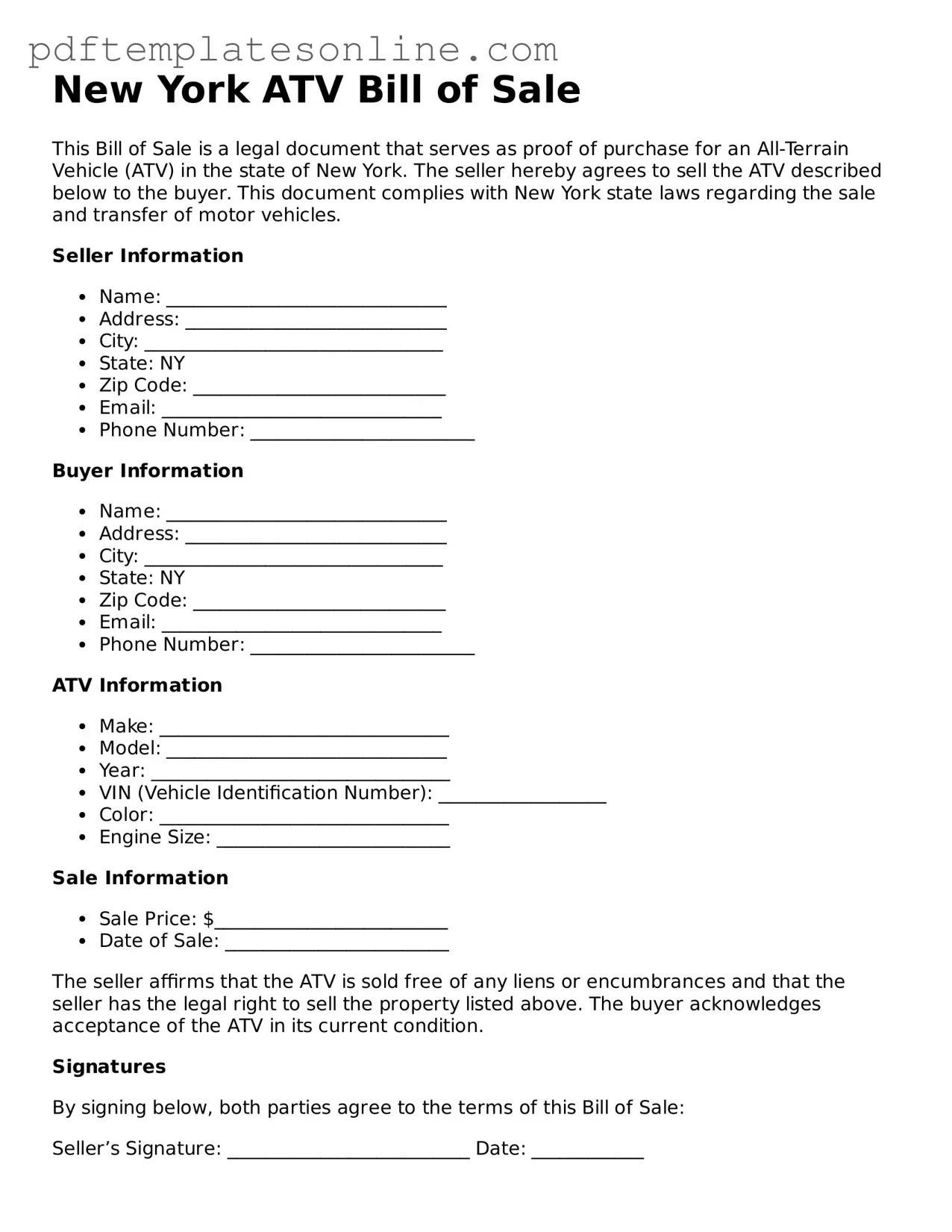Filling out the New York ATV Bill of Sale form can seem straightforward, but many people make common mistakes that can lead to complications later. One frequent error is failing to provide accurate information about the ATV itself. This includes details like the make, model, year, and Vehicle Identification Number (VIN). If any of this information is incorrect or missing, it could create issues with registration or ownership verification.
Another mistake is not including the correct names and addresses of both the buyer and the seller. It’s essential to ensure that all names are spelled correctly and that the addresses are current. Incomplete or incorrect personal information can lead to problems if there’s ever a dispute regarding the sale.
Some people overlook the importance of signing the form. Both the buyer and the seller must sign the Bill of Sale for it to be valid. Without signatures, the document may not hold up if challenged. This step is crucial in confirming that both parties agree to the terms of the sale.
Additionally, failing to include the sale price is another common mistake. The form should clearly state how much the ATV was sold for. This amount is not only important for record-keeping but also for tax purposes. If the price is missing, it could lead to confusion or disputes down the line.
Lastly, many individuals forget to keep a copy of the completed Bill of Sale for their records. After the transaction is complete, having a copy can be beneficial. It serves as proof of the sale and can be useful if any issues arise in the future regarding ownership or condition of the ATV.
